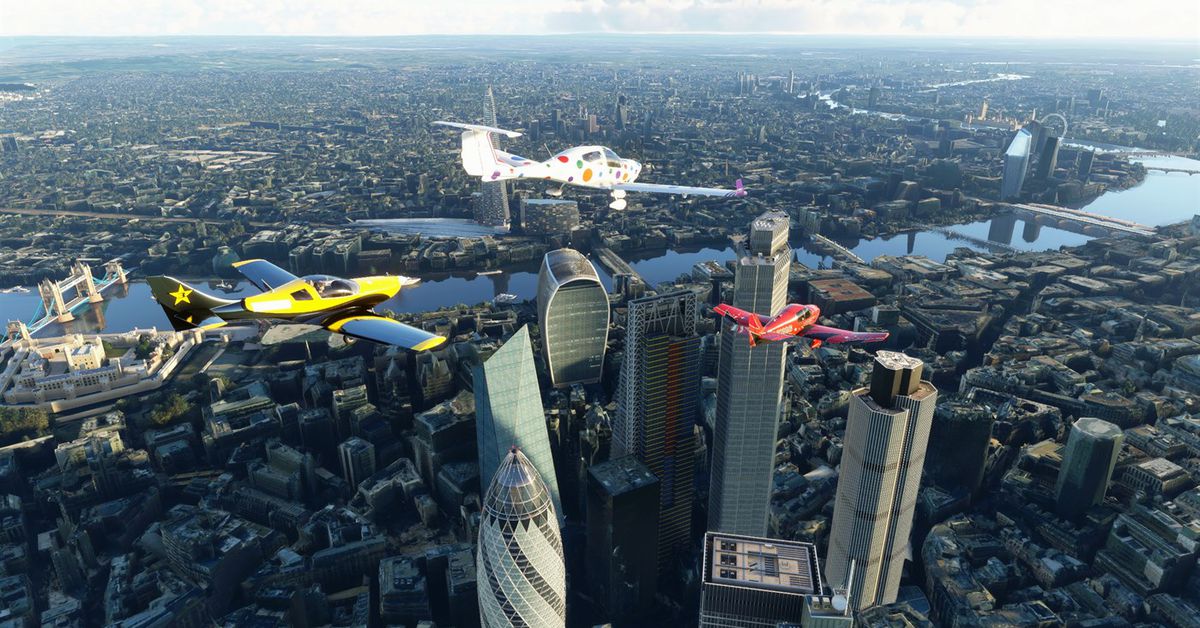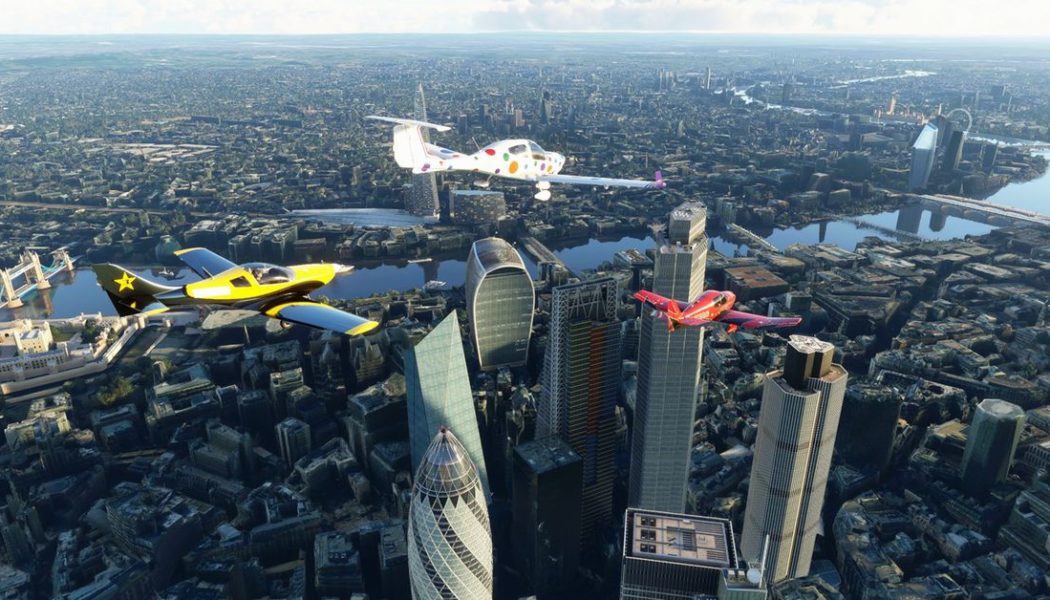
Nothing has pushed my PC further than Microsoft Flight Simulator. That might sound odd for a “game” that’s largely about flying around empty skies by yourself, but Asobo’s latest iteration of the classic franchise is technically groundbreaking and ambitious, with all manner of wizardry going on beyond the scenes to stream in accurate city data, real-time weather effects, and so on. I’ve still had a great time with it, but compared to most AAA games, Flight Simulator asks a lot more of your CPU.
That’s why I was intrigued by the new version for Xbox Series consoles, which comes out on Game Pass tomorrow. In fact, it’s the first Microsoft game for Xbox Series consoles that won’t run natively on any Xbox One model at all, though an xCloud version is also coming to mobile and will eventually hit older Xbox consoles as well. I’ve been playing a preview build provided by Microsoft on my Series X for a few days, and as with my PC, I think it’s the strongest workout for the hardware so far.
Microsoft Flight Simulator is essentially the same proposition on Xbox as it is on PC, offering players the chance to pilot a variety of aircraft around a beautifully rendered version of our planet. The tutorials have been tweaked a little, with a series of shorter missions that should make it easier to get up to speed, and the various commands have been mapped to the Xbox controller in a straightforward, accessible way. You can make the flight model just as complex as the PC version if you want, although right now there aren’t a lot of Xbox-compatible flight stick options.
On the Series X, Flight Simulator runs at 4K resolution and targets 30 frames per second. Overall, I got a more stable experience on the Series X than my own i5 6600K/GTX 1080 rig, which was impressive when I put it together five years ago but somewhat less so now. The frame rate isn’t perfectly smooth — you can drop below 30 when flying low in dense areas like downtown Manhattan, for example, and that’s noticeable. It helped that I played on an LG CX OLED TV, which is capable of variable refresh rates and means you don’t experience tearing or stuttering when the frame rate does fluctuate above or below 30.
Graphical settings are broadly comparable to what you’d get on a good gaming PC, if not quite at the top of the line. The game consistently looks stunning when you’re high in the air, and any seams in the experience are only really apparent when flying close to the ground. That tends to be more to do with how the photogrammetry streaming technology works — again, if you fly quickly into Manhattan or Shinjuku, not every skyscraper is always going to be loaded into memory at once, meaning some buildings might appear a little wobbly at first. I also noticed a few amusing glitches from time to time, like cars driving on the surface of the River Thames in London instead of on Tower Bridge directly above.
As for the Series S, my colleague Tom Warren has spent some time testing that version, and the results are impressive for a tiny $299 box. The game runs at 1080p with reduced graphical effects and draw distances, but as you’ll see from the video, it delivers a solid Flight Simulator experience and will be by far the cheapest way to achieve it.
[embedded content]
Microsoft Flight Simulator has improved a lot since its launch last year, with “world updates” that expand the more detailed photogrammetry data further across the globe. That’s all there in the Xbox version, too, including the most recent Nordics update that includes hand-rendered airports and points of interest across Scandinavia, Iceland, and Finland. (It’s also worth noting that the PC version is getting a further update this week that Microsoft promises should dramatically improve performance across the board — stay tuned for how that works in practice.)
If anything, the Xbox version can feel a little too close to the PC version at times, with an occasionally clunky cursor-driven interface. It’s a little conspicuous to have a graphic settings menu where the only option is to turn HDR on and off, for example. But it’s better to leave too much in than to cut too much out: what matters is that the flying experience is as good as it could be given the hardware on hand.
From what I’ve played of Microsoft Flight Simulator on the Xbox Series X, I don’t feel like Asobo has left much on the table. It’s still an incredible technical achievement, and one well worth checking out when it hits Game Pass tomorrow.








